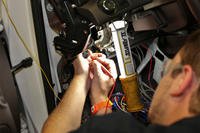by Lou Cataldo
When the words “Mitsubishi” and “Evolution” are brought up, one model immediately comes to mind: the Lancer. The Lancer Evolution, frequently shortened to Lancer Evo, is an iconic sports sedan and rallying legend produced between 1992 and 2016. The model lasted across 10 generations, and left a lasting mark on both the world of motorsport and that of road cars.
Although the first generation of the Lancer Evo to be exported to the States was the eighth (“Evo VIII”) in 2003, some earlier versions of the model are now eligible for import under the 25-year rule. These include what is arguably the coolest Lancer Evo ever made: the limited-run Tommi Mäkinen Tommi Mäkinen edition, named after the legendary Finnish rally driver.
There is, however, another vehicle in the Mitsubishi family which has carried the Evolution nameplate and covered itself in glory in the racing world thanks to its stellar performance off the beaten track. We're talking about the Pajero Evolution, a rally-oriented version of the Pajero SUV (known in the US as the Montero). The Pajero Evolution has a long history that spanned over 20 years; for two of those years, a road-legal homologation version was built, which allowed car enthusiasts to take a piece of rallying history home with them. Let’s take a closer look at the history and features of the Pajero Evolution.
The Pajero Evolution: A Mitsubishi Hidden Gem

| Mitsubishi Pajero Evolution (Street Version) | |
| Engine | 3.5-liter V6 |
| Power | 275-280 hp |
| Years Produced | 1997–1999 |
| Units Produced | ~2,700 |
The Pajero Evolution is an off-road competition car produced between 1984 and 2007, based on the second-generation Pajero. It was built to compete in the world of rallying, more specifically in the Dakar Rally, one of the most famous off-road competitions in the world.
The Pajero Evolution came with many unique design elements not found in the standard vehicle. These included modified bumpers and a functional hood scoop, plus two rear spoilers and skid plates and mud flaps for protection. The suspension was also modified: while Mitsubishi used a double wishbone independent suspension at the front, at the rear it used a multi-link independent suspension, unique to the Pajero Evolution. Mitsubishi also installed front and rear Torsen limited-slip differentials, to enhance the vehicle’s off-roading capabilities.

In 1997, Mitsubishi created a road-legal version of the Pajero Evolution for homologation purposes; the brand’s intention was to homologate the Pajero Evolution for the Dakar Rally’s production-based T2 class. This vehicle carried over several of the design features that characterized its racing counterpart, which set it apart and marked it out as a performance model. Power came from a 3.5-liter 24-valve V6 engine, which produced 275-280 hp. The engine was paired with a five-speed manual transmission.
Although the exact number of units produced for the road-legal Pajero Evolution is unclear, we know that between 2,500 and 3,000 examples were built over a period of two years (between 1997 and 1999).
If you’re interested in purchasing a Pajero Evolution on the used market today, you can expect to find a price range of between $15,000 and $35,000, depending on several factors such as the vehicle’s mileage and condition. Of course, with so few examples of the model having been built, you might have to wait some time or travel a long way to make your purchase.
The Pajero Evolution In The Rallying World

Although the street-legal homologation version of the Pajero Evolution arrived in the late 90s, the race car that spawned it had been around for over a decade at that point. The Pajero Evolution was made with one of rallying’s most famous competitions in mind: the Dakar Rally. Mitsubishi succeeded in its intent: the Pajero Evolution dominated the competition for years, shaping the Dakar’s history.

It made its debut during the 1983 edition of the race; just two years later it achieved its first victory, with Patrick Zaniroli behind the wheel and Francia Jean da Silva as co-driver. 1985 would, however, be far from the only time the Pajero Evolution made it to the top of the Dakar podium: a further 11 victories would follow, including an unbroken streak between 2001 and 2007. This makes the Pajero Evolution the car that has won the Dakar Rally the most times.
The Dakar was also not the only race where the Pajero Evolution was successful. The car has victories to its name in other, less famous but also grueling, rallying events. These include multiple events in Australia (such as the Australasian Safari and the Australian Offroad Racing Championship) and the Northern Forest, held in St Petersburg, Russia.
Sources: Mitsubishi, Cars&Bids
Read the full article on CarBuzz
This article originally appeared on CarBuzz and is republished here with permission.










